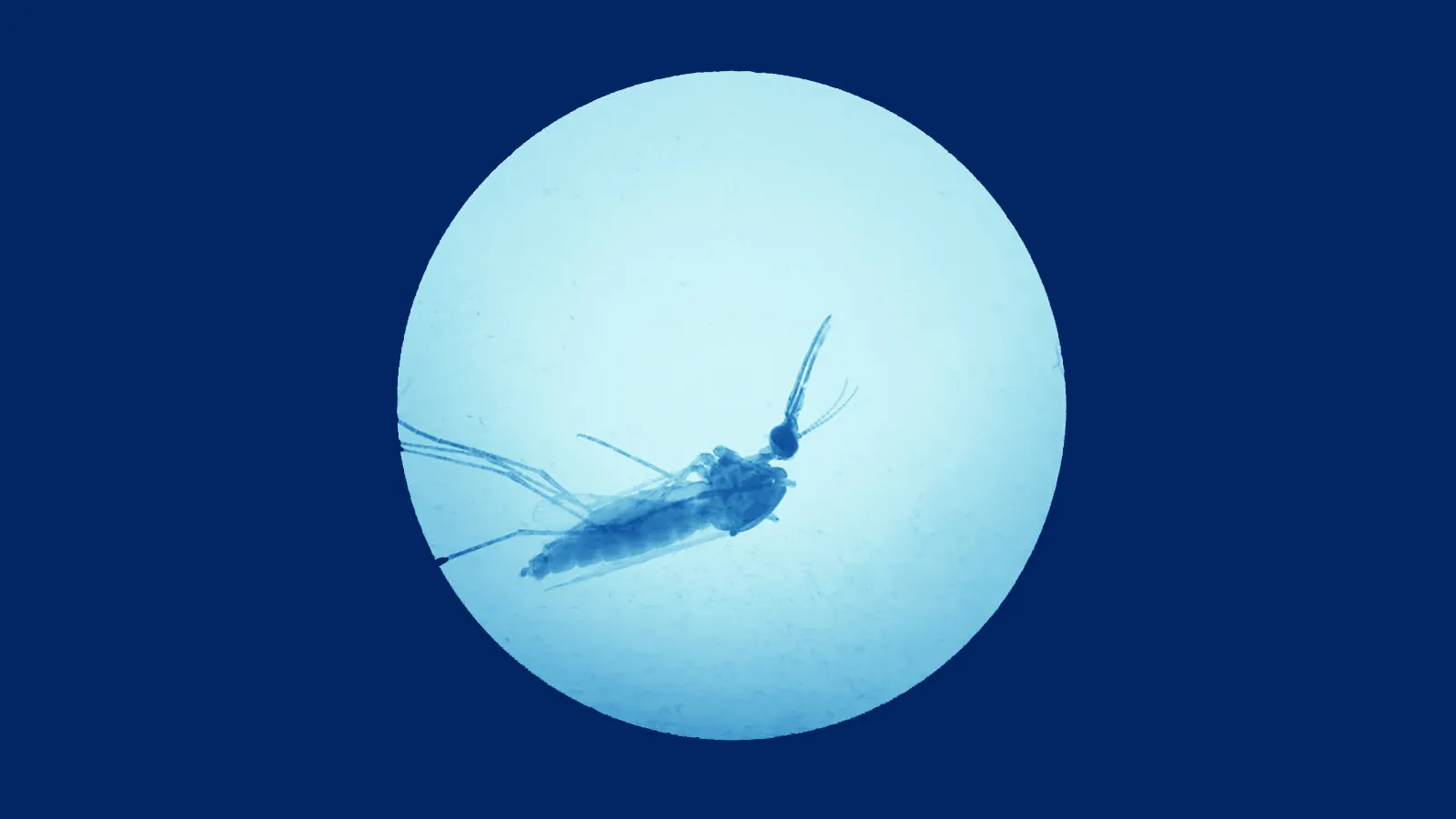New Vaccine Targets to Block Transmission of Malaria by Mosquitos
Of the two vaccines against malaria, both have <50% efficacy against severe illness, and don’t prevent transmission of the parasite that causes malaria as it cycles from mosquitos to humans. Kristian Swearingen in the Moritz Lab, with Seattle Children’s Research Institute is accelerating vaccine development by identifying transmission-blocking parasite target proteins.

View of a mosquito under a microscope. Image credit: Dr. Kristian Swearingen/ISB.
Malaria is one of the leading causes of death globally. The parasite infects hundreds of millions each year and kills more than half a million; most of those deaths occur in children under 5 years old in Africa. Although two malaria vaccines are currently in use in regions with high levels of the disease, these vaccines only reduce infection rates by around 40-75 percent and they don’t appear to reduce transmission of parasites from an infected person to mosquitoes that will spread the disease. A small number of researchers are pursuing a different approach to malaria vaccine development known as transmission-blocking vaccines, in which human antibodies are carried into the mosquito host when it bites the vaccinated person. These antibodies then stop the parasite from completing its life cycle in the insect, preventing transmission of malaria to the next person in the chain. Kristian Swearingen, PhD, is leading a project with colleagues at ISB and Seattle Children’s Research Institute (SCRI) to find potential new malaria protein targets for transmission-blocking vaccines.
- Funded by National Institute of Allergy and Infectious Diseases
- Led by Kristian Swearingen, PhD
- Key collaborators:
- Robert Moritz, PhD, ISB
- Stefan Kappe, PhD, and Noah Sather, PhD, Seattle Children’s Research Institute
Malaria vaccines to block transmission in the mosquito
The concept of transmission-blocking vaccines for malaria has been around since the 1980s, but for many years, the discovery of the proteins that could be used as a basis for such a vaccine was slow. Swearingen is an expert in mass spectrometry, a technique that can capture information about thousands of proteins at once, and is using that method to survey all the proteins on the surface of Plasmodium falciparum, the parasite that causes around 50 percent of malaria cases and is most common in Africa. Specifically, he and his colleagues are looking at surface proteins in the reproductive stages of the parasite’s life cycle that happen in the mosquito gut. To date, no studies have characterized proteins at a large scale in these forms of the parasite.
They’re also testing pieces of the proteins they discover to figure out which pieces, known as antigens, might produce the strongest immune response if they were used as part of a vaccine. Once the team identifies promising antigens that elicit the production of antibodies in mice, they test whether those antibodies can block the parasite’s life cycle in mosquitos, working in special facilities at SCRI designed to study malaria-infected mosquitos.
Ultimately, they hope to identify antigens that elicit antibodies that could block Plasmodium’s sexual reproduction in the mosquito, a critical stage in its life cycle, or that could block the parasite’s zygote stage from burrowing into the mosquito’s gut. Either of these scenarios would prevent the parasite from transmitting from the insect host to the next bitten human. Because transmission-blocking vaccines don’t prevent infection in the vaccinated person, such vaccines would likely need to be combined with infection-preventive measures such as existing vaccines or drugs to have the greatest impact in reducing the global burden of malaria.

Contact Dr. Kristian Swearingen
Senior Research Scientist
ISB